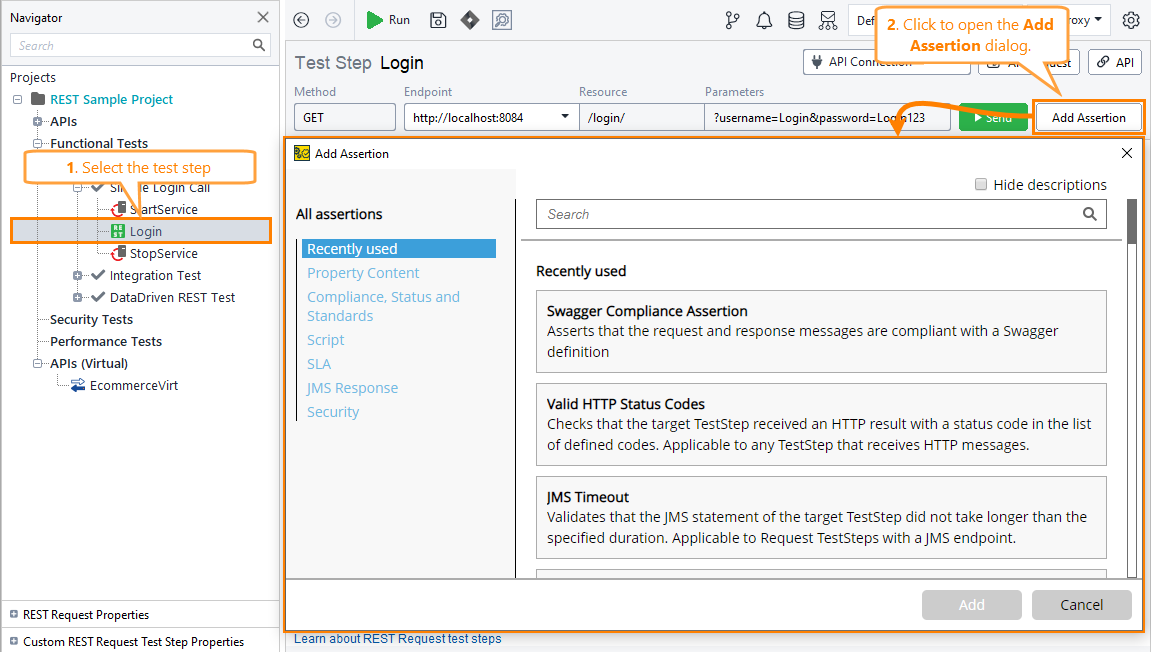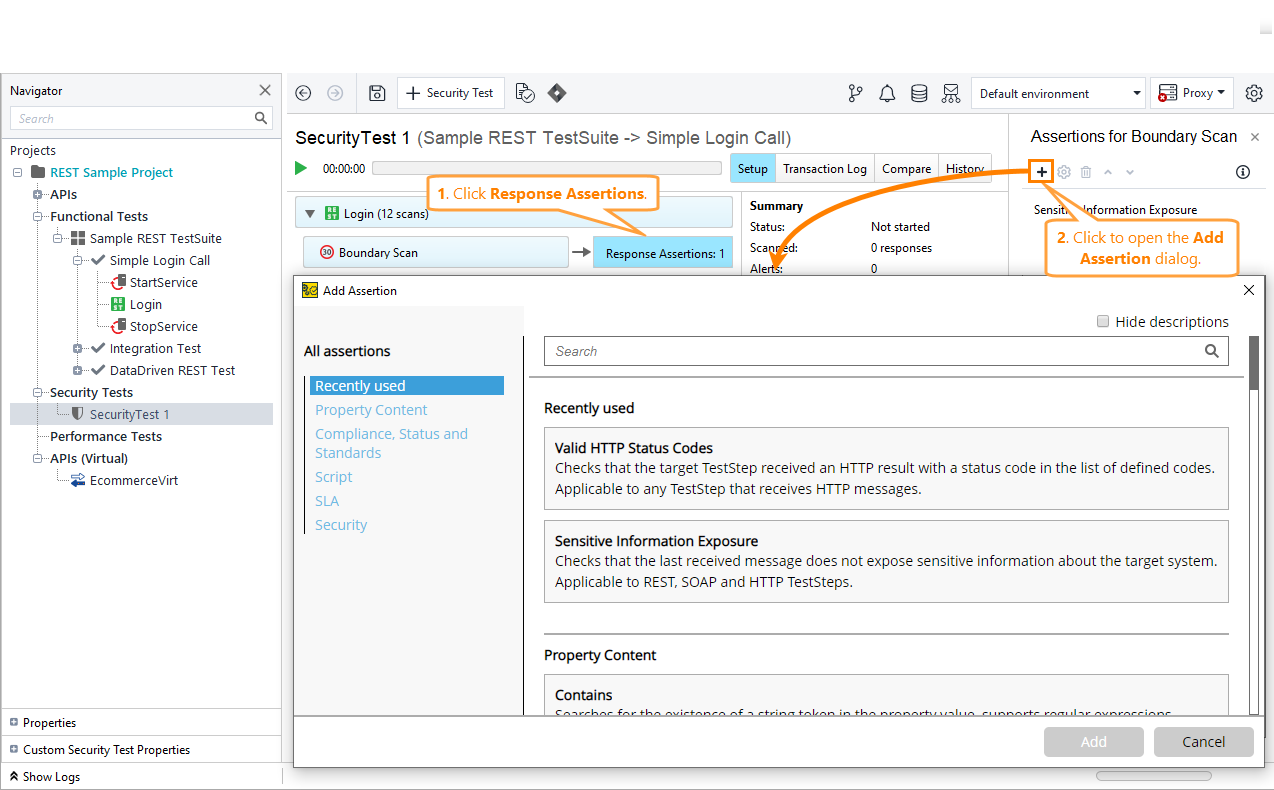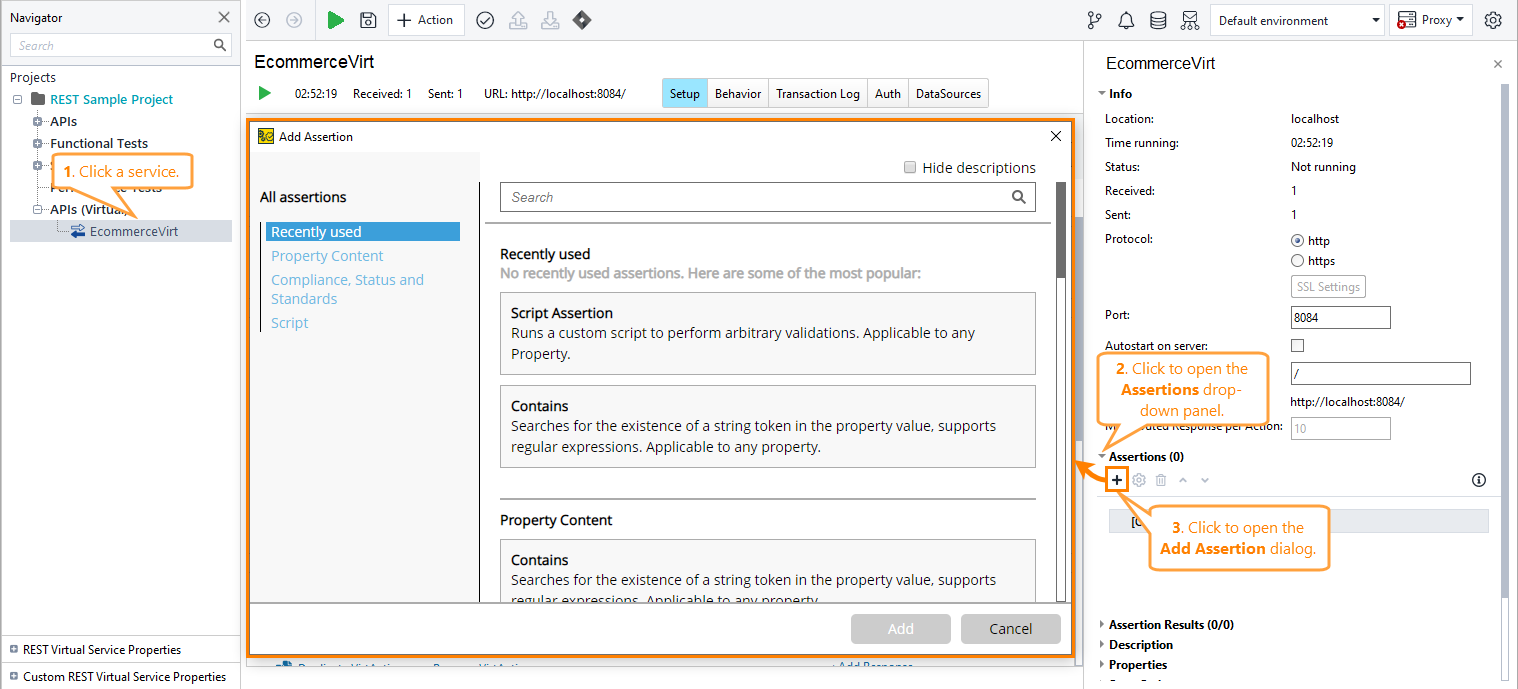JSONPath RegEx Match Assertion
The JSONPath RegEx Match assertion uses a JSONPath expression to select content from the target property and compare the result to a regular expression you have specified.
This assertion returns a Boolean value. To compare a value with some specific content, use the JSONPath Match assertion.
Important
This assertion applies only to requests and responses, bodies of which contain JSON data.
To learn more about the JSONPath syntax, see JSONPath Reference.
Availability
This assertion is available in multiple ReadyAPI applications. Depending on the application, it validates the following data:
In... | Checks... | To learn more... |
|---|---|---|
The request or response body. | ||
The response body. | See Security Assertions. | |
The request body. |
Create an assertion
Setting up properties
In the JSONPath Expression edit box, specify the JSONPath expression to point at the element you want to compare the regular expression with, or use the toolbar controls to create the expression automatically.
Important
To use the toolbar controls, run the request you want to validate at least once.
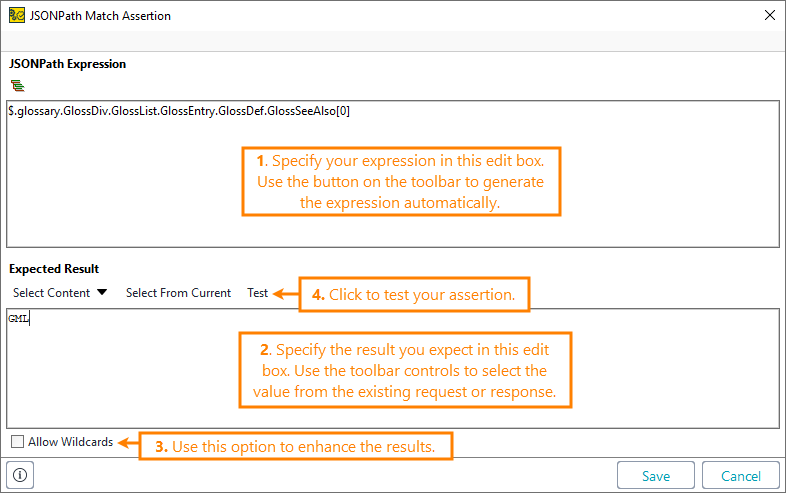
Click
 to call the Select JSON dialog. Use it to select a node from the last request or response and create a JSON path expression for this node.
to call the Select JSON dialog. Use it to select a node from the last request or response and create a JSON path expression for this node.In the Regular Expression edit box, specify the regular expression you want to use for the comparison.
In the Expected Result edit box, specify the value you are expecting to get.
Use these commands to visually select the value from the existing request or response:
Option
Description
Select Content
Add a property expansion in the result.
Select from Current
Get a value from the last response you have received (or the last request the virtual service has received).
To command the assertion to use an asterisk wildcard (
*) for varying parts of the value, select Allow Wildcards.Note
If you do not select this option, the assertion will fail on dynamic values.
To test your assertion on the last response you have received (or the last request the virtual service has received), click Test.
Tips
To avoid typing the desired JSONPath expression manually, click
 and select the desired JSON element or attribute in the subsequent dialog.
and select the desired JSON element or attribute in the subsequent dialog.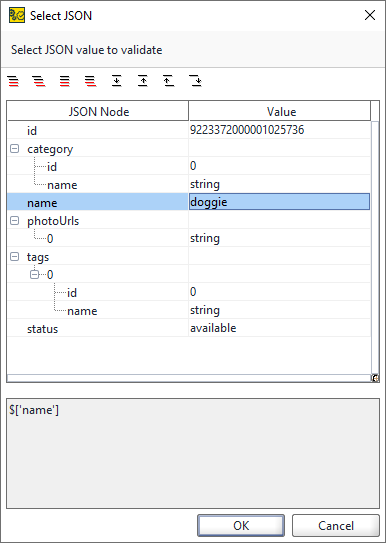
ReadyAPI will form the JSONPath expression that refers the selected item and will set the result from the last request or response as the expected result.
ASP.NET-based services enclose the JSON response payload into the
droot element for security reasons. By default, ReadyAPI does not strip thedelement out, but there is an option to automatically remove it. If you turn this option on, JSON-related assertions created from the JSON response will not take the root element into account, which can cause the assertion to fail unexpectedly.
Examples
The following JSONPath expression gets all
textsubelements in thewidgetelement:$.widget.text
The following JSONPath expression gets all subelements in the
widgetelement:$.widget.*
The following JSONPath expression gets all
textsubelements of theheadertype in thewidgetelement:$.widget.text[?(@.type=='header')]
Other assertions with JSONPath
Add more assertions that use JSONPath expressions:
